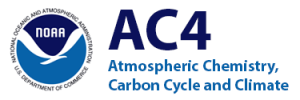- Year Funded: 2014
- Principal Investigators: Kerri A. Pratt (University of Michigan)
- Programs: AC4 Funded Project
- Oil & Gas
- Google Scholar Link
Direct aerosol emissions of black carbon and organic carbon with co-emitted secondary aerosol precursors are predicted to increase dramatically due to increased Arctic oil and gas extraction activities along the North Slope of Alaska resulting from the unprecedented summertime Arctic sea ice loss. The proposed project will result in the first detailed characterization of atmospheric aerosols resulting from oil and gas extraction activities on the North Slope of Alaska. On-line aerosol measurement techniques will include: aerosol time-of-flight mass spectrometry (ATOFMS, real-time single-particle size and chemistry), aethalometer (on-line black carbon mass conc.), and scanning mobility particle sizer (size-resolved particle number conc.). Off-line filter-based aerosol samples will be analyzed for elemental carbon and organic carbon content, inorganic ions, organic molecular tracers, and modern vs. fossil carbon (radiocarbon analyses). In particular, ATOFMS will distinguish in real-time between combustion sources, including residual fuel, diesel fuel, and wildfires to provide source apportioned particle number concentration. Backward air mass trajectory analysis will support source identification. The combination of real-time, single-particle identification and number apportionment with off-line, mass-based apportionment will all allow a level of Arctic aerosol characterization not previously attempted.


